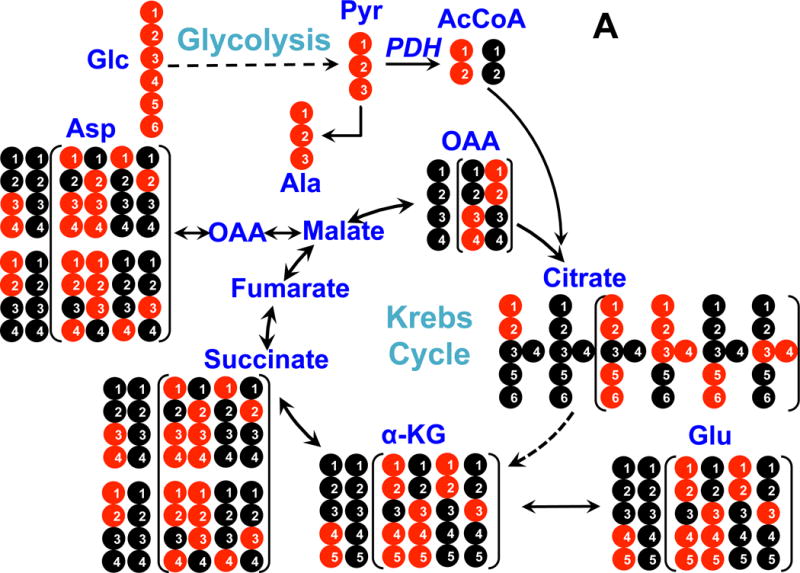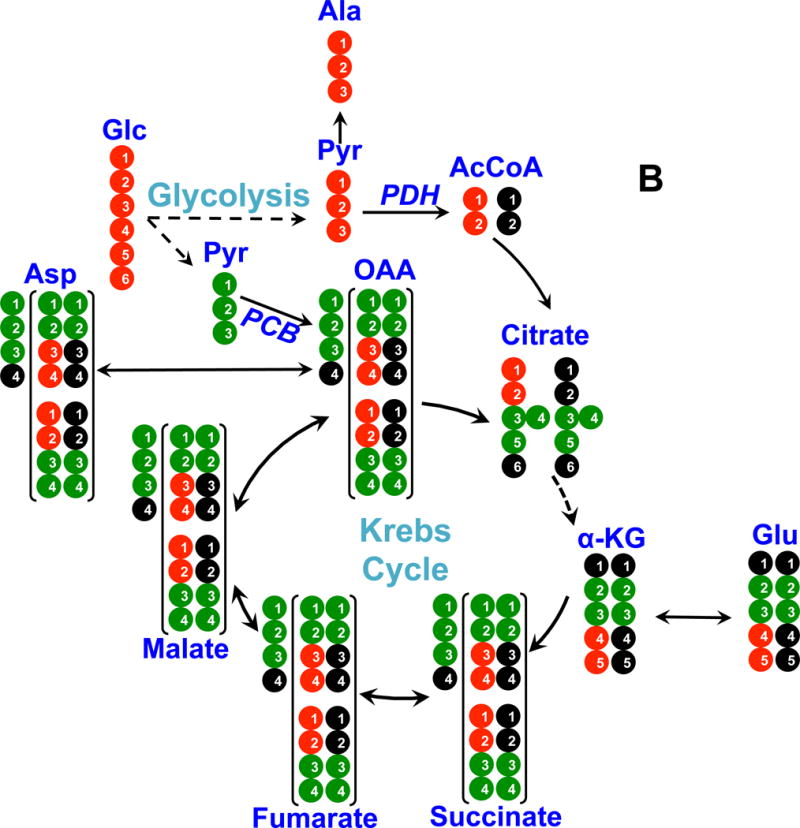Figure 4. 13C atom-resolved tracing of 13C6-Glc oxidation through the interconnecting cytoplasmic glycolysis and mitochondrial Krebs cycle.


Panel A shows 13C incorporation from 13C6-Glc into various metabolites via the PDH (pyruvate dehydrogenase) pathway; panel B shows 13C incorporation from 13C6-Glc into metabolites via the PCB (pyruvate carboxylase) pathway. ●: 12C; ●: 13C; ●,● indicates 13C derived from PDH or PCB mediated Krebs cycle reactions, respectively; In panel A, the labeled patterns of the first and second (in brackets) turns of the PDH-initiated Krebs cycle are shown. In panel B, 13C3-pyruvate (Pyr) is carboxylated to form 13C3-oxaloacetate (OAA), leading to the formation of 13C3-Asp, -malate, -fumarate, and -succinate (patterns outside brackets); the labeled structures in brackets are derived from the reaction of 13C3-OAA with 13C2- or unlabeled acetyl CoA (AcCoA) to form other labeled Krebs cycle intermediates after one cycle turn. α-KG: α-ketoglutarate; not all expected labeled patterns of metabolites are shown [10].
